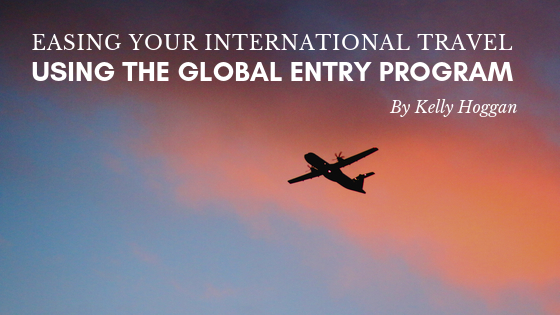Kelly Hoggan originally published this piece on H4-Solutions.com.
_
Anyone who’s ever traveled internationally and then returned to the United States no doubt has a story to tell when it comes to making their way through U.S. Customs stations. Stories abound of travelers held up in Customs, sometimes for hours, while clearing various issues related to their documents or background information. In some cases, they’re even refused entry altogether. Fortunately, there’s a way for travelers to ease their way through the Customs process, and it’s called “Global Entry.”
Part of the U.S. Customs and Border Protection agency’s “Trusted Traveler Programs,” Global Entry gives approved travelers expedited entry upon arrival into the United States. With time so valuable for many international travelers, any way to cut down on time spent “clearing Customs” is sure to be appreciated. Once in the Global Entry program, you’re allowed to use automatic kiosks at select airports around the United States.
Those kiosks are the jewel of the program because, for the approved traveler, they almost always eliminate any need to proceed through a human-staffed Customs lane. Travelers simply present their machine-readable passports or U.S. permanent resident cards and then place their fingerprints on the scanner. Once the machine verifies those prints, Global Entry members then fill out a customs declaration form. After that, the kiosk prints out a transaction receipts and directs the traveler to proceed to baggage claim and then the exits. Simple as that.
Of course, to take advantage of the program, you’ll have to meet specific criteria, as well as have a Trusted Traveler account. There’s a $100 non-refundable fee as well. Once you’re conditionally approved, your new Trusted Traveler Program account will instruct you to schedule an interview at one of the many Global Entry Enrollment centers located around the United States. There’s even one in Qatar.
As far as screening criteria, Global Entry applicants must be what the Department of Homeland Security (the parent agency for U.S. Customs and Border Patrol) refers to as “low-risk travelers.” You shouldn’t be on any DHS or other agency “watch lists,” which most travelers aren’t, of course. There are other screening factors DHS and Customs look at, and the background investigation is what DHS and Customs call “rigorous.” Plus, the in-person interview may not be a walk in the park. But if you haven’t had any serious issues with the law and aren’t on any of those famous watch lists, you shouldn’t have much of a problem gaining approval for Trusted Traveler and Global Entry status. Check out the Global Entry website for a complete breakdown of those requirements.
Another benefit of Global Entry is that once you’re approved for membership, you’ll also be accepted for the Transportation Security Administration’s “Precheck” (trademarked as Pre✓), which can significantly speed your way through TSA security checkpoints at many U.S. airports. Going for Global Entry approval, which costs $100 when you apply for Trusted Traveler status, eliminates the $85 standalone fee TSA charges for Pre✓. Plus, both are good for 5 years from final approval as an official Trusted Traveler. Given all the benefits of Global Entry, it makes little sense for travelers to seek out TSA approval alone.


